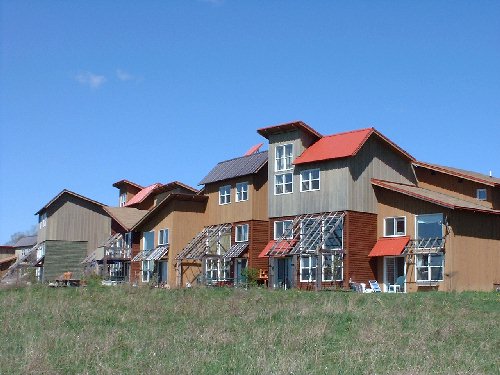.
I love saying the phrase “paralysis of knowledge,” used most tellingly, it appears, by Søren Kirkegaard, to mean that when we know too much, we are made unable to act.This sometimes happens to my very young friends, when they are persuaded that energy is the most pressing problem facing us today: if we use fossil fuels as heavily and as rapidly as the economy pressures society to do, we will on the one hand pollute our environment beyond our ability to remedy it, and on the other hand, use up our stores of fuel.
Most young people are just unable to comprehend the scale of the problems, and the quantitative parameters of the argument. But the most intelligent of them can grasp something of the size of the problem, even without being able to understand the quantitative arguments, and it results in a sense of hopelessness.
This paralysis is further aggravated by the fact that clean energy is really not so clean. The technology of photoelectric cells and batteries involves a lot of very dirty by-products. (Actually, manufacturing transistors and chips involves a lot of very poisonous materials, as does the manufacture and disposal of batteries. I know, I know. It’s positively depressing. I warned you.)
But there is one shining, shining application of clean energy that can be easily used, and easily implemented, and which has little or no environmental impact. And that is passive solar heating. If you’ve never heard of passive solar heating, this is what it is.
You put a glass tank on your roof. The sun heats up the water, as it is wont to do. You use the warm water.
That’s it. You keep your house cool, and heat your water all in one fell swoop. Simple, yes? BUT NOBODY DOES IT.
I think I’ll just stop here. It’s a homework project for you readers. There is little or no technology involved. Why doesn’t the government make a bigger fuss about its use? Well, there is a tax deduction. Why isn’t it publicized more? Because one begins to sound like a crank if one gets too enthusiastic about anything these days.
Gotta go.
Arch
Added later:
To supplement this post, I looked for information on Google, but it was so voluminous, I gave up and looked for pictures instead.
In this site, the US Dept of Energy explains how home construction can be adapted to minimize your heating needs. Obviously, you can’t do this with an existing house very well.
In this next article, a private organization shows off an entire development that uses passive solar methods for both heating and cooling very aggressively.
This next image is of a typical solar home; this one uses both passive and active solar heating: the heating medium (the water) is moved around partly by the heat of the sun, and partly by a pump.
Unfortunately, this home seems to give weight to the stereotype that solar homes are the homes of rich folks, new and elaborate, and sitting on expensive real estate. This is historically true; solar construction has thus far been an indulgence of affluent people who can afford to be creative with their new homes. But with a little effort, it should be possible to turn designers and inventors in the direction of modifying existing homes to add passive solar elements as add-ons.
Thus far, I have illustrated (1) the use of sun-heated water, both for consumption, and for home heating, with equipment supplied by a commercial passive-solar systems provider, and (2) solar heating and illumination designs for new homes to use large, south-facing windows to trap (and control) solar heat, and light. Another important principle is (3) the use of insulation to minimize heating needs over the winter months. This last is the most practical investment for me personally; only the need to save up the funds for the improvement of our circa 1898 home prevents us from going this distance immediately.
We spend on the average $200 a month, from December through March. If insulation cuts that expense by a fifth, we will save $40 a month, for 4 months a year, and possibly more, a savings of, on the average, $160 a year, at the very least.
A more efficient refrigerator would save us more money, if we could afford one. Our present monster is from around 1997, and a new one would save us at least $50 a month, which means we can recoup the price of a replacement within a year.
We spend around $150 every month over the summer, for cooling. (It is hard to tell without inspecting our bills more carefully; the electric company sort of charges us a flat rate throughout the year, and so our Summer cooling costs could be a bit lower, and our heating costs in the Winter a little higher.) If we got into passive solar heating, it would lower the cost of the water heater, and lower the need for cooling, a savings of ... I don’t know; I'd guess at the very least $40 a month. If I could tolerate taking a loan over two years to make the improvements, around $1800 of it could be gotten from energy savings. I do not, however, believe that the equipment can be obtained for under $5000. Feel free to straighten me out, if you happen to know that I am wrong!
Arch
’“”







No comments:
Post a Comment